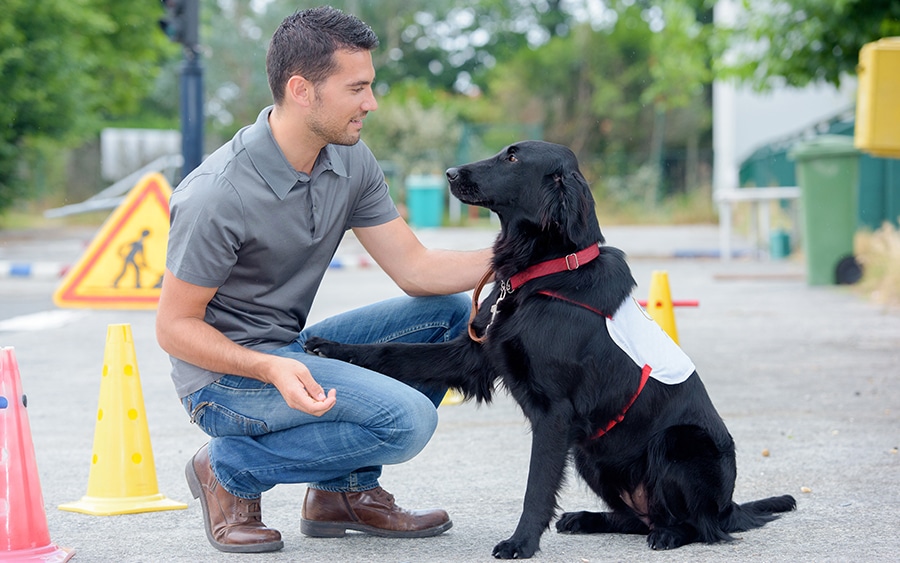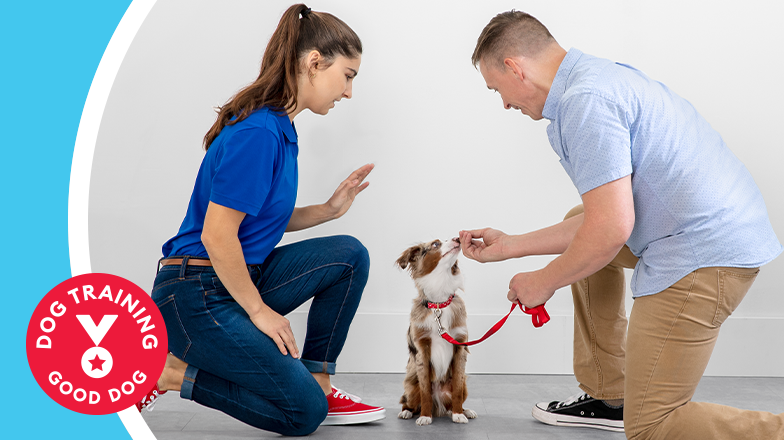Common Mistakes to Avoid During Dog Training for Better Results
Common Mistakes to Avoid During Dog Training for Better Results
Blog Article
Newbie's Guide to Successful Canine Training in the house
Effectively educating a dog in the house needs a nuanced understanding of canine habits and reliable interaction techniques. Establishing clear training goals, utilizing high-quality rewards, and maintaining uniformity throughout household participants are important aspects. Incorporating training right into everyday regimens can boost both interaction and retention. Several novice trainers encounter difficulties that may impede progress. To browse these intricacies successfully, it's vital to explore a number of crucial aspects that can transform your technique and lead to an unified partnership with your animal. What basic principles should every novice grasp to ensure success?
Recognizing Canine Habits
Comprehending pet dog habits is necessary for reliable training and cultivating an unified connection in between humans and their canine companions. Pets connect primarily via body language, articulations, and faces, making it important for owners to interpret these signals properly. Recognizing behaviors such as tail wagging, grumbling, or trembling can give understandings into a dog's emotion and intents.

Usual behavioral problems, such as hostility, anxiousness, or excessive barking, commonly originate from misunderstandings or unmet requirements. Observing and attending to these problems promptly can prevent escalation and make sure a positive training experience. By cultivating a deep understanding of dog habits, proprietors can customize their training techniques to fit their canine buddies, inevitably leading to a well-behaved and pleased pet.
Essential Training Tools
A well-appointed training space can substantially enhance the effectiveness of pet dog training in your home. Important training devices make certain that both the trainer and the dog can take part in effective sessions that cultivate discovering and bonding.

Purchasing a durable leash and a comfortable, well-fitting collar or harness is crucial for security and control. These tools aid establish borders and ensure the pet stays safe and secure throughout training. In addition, a designated training area, without interruptions, help concentration for both the dog and the trainer.
Educating help such as training pads, cones, or dexterity equipment can additionally enhance the experience by presenting variety and obstacles. Last but not least, having a notebook or digital app for tracking progression can be vital, allowing you to note successes and locations for enhancement. Using these crucial devices will certainly create a positive training setting and lay the structure for reliable learning.
Producing an Educating Regimen
Developing a regular training regimen is crucial for efficient pet training in your home. A well-structured routine not just assists in reinforcing wanted behaviors yet likewise supplies your dog with a complacency and predictability. To produce an effective training routine, begin by identifying specific training objectives, such as standard commands, leash strolling, or housebreaking.
Choose a designated time each day for training sessions, ideally when your dog is sharp and responsive. Procedure needs to be brief, around 5 to 15 minutes, to maintain focus and protect against exhaustion. Uniformity in timing and atmosphere will enhance your dog's discovering experience.
Include training into day-to-day tasks to enhance skills. As an example, technique commands during strolls or nourishment, which integrates finding out right into all-natural routines. Furthermore, stay adaptable and change the regular as needed, fitting your canine's power degrees and state of mind.
Positive Reinforcement Strategies
Positive reinforcement techniques are essential to efficient dog training, promoting wanted behaviors via incentives instead of penalty. This method makes use of positive stimulations, such as treats, appreciation, or playtime, to urge pets to duplicate certain activities. The foundation of description this approach is timing; rewards should be offered immediately complying with the desired habits to create Find Out More a clear association.
When applying positive reinforcement, it is vital to choose benefits that are motivating for your canine. High-value treats, such as small items of hen or cheese, can be especially effective throughout training sessions. Furthermore, varying the benefits can keep your pet's passion and interest.
Start with simple commands, like "rest" or "remain," and slowly progress to much more complicated jobs. Consistency is key; guarantee that all relative utilize the very same commands and benefit systems to avoid confusion.
Furthermore, it is essential to continue to be patient and stay clear of aggravation. Pet dogs, like people, find out at their very own speed. By cultivating a helpful training setting through favorable reinforcement, you can enhance your dog's understanding experience while enhancing the bond between you and your hairy companion, preparing for successful training outcomes.
Typical Training Difficulties
While educating a pet at home can be a fulfilling experience, it frequently includes a set of common obstacles that can evaluate both patience and consistency. One common problem is interruption. Pets might become conveniently sidetracked by sounds, movements, or perhaps scents in their environment, making it challenging to preserve their focus during training sessions.
Another difficulty is variance in commands and reinforcement. It can prevent and puzzle the pet dog development if household participants make use of various signs or rewards. Developing a unified approach is vital for reliable interaction.
Furthermore, dogs can experience stress or tension, particularly if they do not recognize what is anticipated of them. This can bring about undesirable behaviors, such as eating or barking.
Ultimately, the timing of reinforcement is crucial (Dog training). Postponed incentives can reduce the performance of positive reinforcement, as canines might stop working to link the actions with the benefit
Getting rid of these challenges calls for commitment, clear communication, and an organized training strategy. Recognizing and dealing with these typical obstacles will Full Article certainly lead the way for an extra enjoyable and effective training experience in your home.
Final Thought
In final thought, successful pet training at home necessitates an extensive understanding of canine actions and efficient communication approaches. By establishing clear training objectives and making use of top quality treats together with positive support, the training procedure ends up being a lot more rewarding for both the dog and the trainer.
Developing a consistent training routine is crucial for reliable dog training at home.Favorable support strategies are fundamental to effective pet dog training, promoting wanted habits via benefits instead than punishment (Dog training). By cultivating a helpful training atmosphere through positive reinforcement, you can boost your dog's discovering experience while reinforcing the bond in between you and your fuzzy companion, laying the foundation for successful training results
In conclusion, effective dog training at home requires a detailed understanding of canine actions and efficient communication techniques. By establishing clear training objectives and utilizing premium deals with alongside positive support, the training procedure comes to be a lot more gratifying for both the pet and the trainer.
Report this page